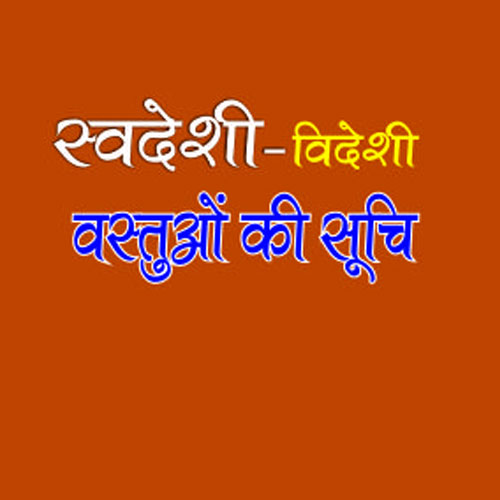
Aftermath Operation Sindoor (International Media on Operation Sindoor-II)
Resisting all the obstructions and challenges, Bharat is determined for nation’s security against all threats from all directions. Pakistan survived only because of Bharat despite its seven decades’ hostility for us. The US and China are eroding its existence. — Vinod Johri
In the previous article on ‘International Media on Operation Sindoor (I)’, the background of British and the US conspiracy on Kashmir partition was discussed in historical perspective along with the significance of Indus waters for survival of Pakistan. Shortly after the ceasefire following four days of Bharat-Pakistan conflict resulting in massive destruction of Pakistan’s terrorist and defence infrastructure, the Israel-Iran war took a diversion to Pak-Iran hostility and treachery as alleged by Iran, owing to the US with its conspicuous involvement supporting Israel.
The US-Pak collusion is worrisome for Bharat as the Operation Sindoor is directly linked to Pakistan post Pahalgam attack on Hindus and four decades of thousands of killings of Hindus by Pak supported and sponsored terrorist attacks. Instead of focussing on the international narratives on the Operation Sindoor, it needs worrisome consideration that Pakistan has been obliged with financial aid of IMF and the World Bank and appointment as UNSC President with obvious support of the US and China ignoring that 123 countries who supported Bharat on Pahalgam attack and Operation Sindoor. It questions the sanctity of the United Nations and UN Security Council:
(Quotes from the latest book – The New World by Shri Ram Madhav)
‘We, the people of the United Nations, determined to save succeeding generations from the scourge of war, which twice in our lifetime has brought untold sorrow to mankind….. (‘United Nations Charter: Preamble,’ the United Nations, https://tinyurl.com/42ffy5pv)’
Further, it brazenly justifies the psychotic approach of the big powers emerged after the World War – II:
‘Two months later (after World War-II), Roosevelt, Churchill and Stalin met in Tehran, and declared that ‘we recognise fully the supreme responsibility resting upon us and all the United Nations to make a peace which will command the goodwill of the overwhelming mass of the peoples of the world and banish the scourge and terror of the war for many generations. (‘The History of the UN’, United Nations, https://tinyurl.com/4r4kxye).’
This is undoubtedly an important theme coming at the most appropriate time and the significant inflection point and passing through disruptive times. More and more voices are being raised over the growing ineffectiveness and inefficiency of this cherished multilateral body (UNO). (Dag Hammarskjold Foundation, ‘Dealing with crimes against Humanity’, Development Dialogue, No. 5, March 2011, https://tinyurl.com/yc83s8y2)
Thus, Pakistan appointed as UNSC President is no big surprise. Recently our Prime Minister Shri Narendra Modiji has expressed concern for reforms in the United Nations.
In the statement on 4th July 2025, the Army Deputy Chief Lt. Gen. Rahul R. Singh stated that Bharat faced three foes – Pakistan, China and Turkiye.
It is very apparent that Pakistan is worst affected by the suspension of Indus Water Treaty. In a statement published in the newspapers on 6th July 2025, PPP leader Bilawal Bhutto has offered to extradite Mumbai blast accused and mastermind dreaded terrorists Hafiz Saeed and Masud Azhar for restoration of IWT, though its sanctity is as doubtful as Pakistan itself.
Though the international narratives against have rendered irrelevant and the US and China have brazenly supported Pakistan. Yet such narratives are repeatedly built every time during Bharat – Pakistan face off.
Few Bizarre Media Reactions against Bharat
Journalist Imran Khalid opined and reported Modi’s strikes were politically engineered. He claimed the confrontation “was not a spontaneous response to terrorism, but rather a premeditated manoeuvre by Prime Minister Modi… rooted in domestic politics”.
Andrew Latham viewed the conflict through an ideological lens. He argued that Sindoor was not just retaliation or electioneering but a symptom of India’s turn toward hardline Hindutva politics. He traced how Modi’s BJP had institutionalized Hindu-majoritarian policies (e.g. revoking Kashmir’s autonomy, citizenship laws).
Fabian Hoffmann examined India’s claimed success with scepticism. He highlighted that “several Indian losses had been verified, casting serious doubt on the success of the operation”. Hoffmann noted India fired advanced standoff weapons (SCALP-EG, AASM, BrahMos) at Pakistan, but images of debris (e.g. a BrahMos booster) suggested Pakistani defences held some intercepts.
Azad Essa strongly condemned India’s actions as communal and expansionist. The tone was outraged and alarmist.
Al Jazeera : Opinion columnist Yousuf Nazar argues Sindoor backfired on India. He contends Modi’s aim of projecting strength instead “boosted Pakistan’s regional standing and left Modi diplomatically weakened”.
Umair Jamal argued the conflict strengthened Pakistan. He claimed India’s decision to strike “has backfired” by uniting Pakistan and boosting confidence.
A report (citing U.S. analysts) praises Pakistan’s integrated air-defence “kill chain.” It contends that a networked Pakistani strike fusing Chinese radars, J-10C fighters, PL-15 missiles, and AWACS – successfully shot down an Indian Rafale.
A report quoted analysts who say Chinese arms acquitted themselves well. Yun Sun observed that Indian systems “are not as effective as a lot of people thought they would be”, and Dr. Carlotta Rinaudo noted the old bias that “Chinese weapons are inferior” is now “not the case anymore”.
Aqil Shah’s Foreign Affairs piece warned that India’s recent strikes did little to deter Pakistan and may instead fuel future violence.
Some Different Voices
A different voice was raised by Joshua White who outlined four emerging dynamics: (1) Attribution has shifted in India’s favour (terror attacks are now readily pinned on Pakistan), which may increase political pressure for immediate retaliation. (2) Both militaries have set new precedents in target selection; (3) Information warfare has become central (particularly Pakistani propaganda); (4) Widespread use of drones/loitering munitions is blurring escalation ladders. Notably, White observed that India’s friends now assume Pakistan’s guilt.
Christopher Clary’s working paper offers a factual, balanced narrative of May 7–10, 2025. It catalogues several firsts (India’s first use of BrahMos and SCALP missiles; Pakistan’s use of Fatah ballistic missiles; first combat drone use by both sides) and noted that both nations claimed victory amid rampant disinformation. India, it finds, repeatedly launched precise standoff strikes deep into Pakistan, showing Pakistani air defences vulnerable.
Some Realistic Voices
Brahma Chellaney analysed Sindoor as a real-world trial of Chinese weaponry and finds them wanting. He noted that Pakistan’s Chinese-supplied J-10C jets (armed with PL-15 missiles) and HQ-9 SAMs saw combat but scored “no independent verification of successful hits,” while India’s layered air defences held firm. By contrast, Indian cruise missiles (BrahMos) struck deep into Pakistan – “crippling major Pakistani air bases” – without suffering confirmed losses. Chellaney highlights India’s use of precision standoff weapons (especially BrahMos) as highly effective.
John Spencerhailed Operation Sindoor as a “massive victory” that surpassed its strategic goals. It neutralised nine major terror camps, struck multiple Pakistani air bases, and asserted India’s military dominance, marking a shift in its national security doctrine. He commended the operation’s precision and restraint, describing it as “decisive and controlled.” India’s intent, he emphasised, was deterrence—not vengeance. Calls for full-scale escalation “miss the point,” as the strikes were designed to impose costs and redefine red lines. Spencer argued this restraint reflects “maturity, not weakness,” and that Bharat’s swift response “changed the strategic equation.” The campaign, he concluded, redefined India’s strategic posture—terror from Pakistan now invites calibrated military retaliation. Under the shadow of nuclear risks, Spencer saw the operation as both a “strategic success” and a “decisive Indian victory.”
Arzan Tarapore framed Sindoor as the latest step in India’s shift to a cost-imposition strategy. He noted India struck a larger array of targets with greater force (cruise missiles, drones, etc.) than before. The article emphasised India’s use of stand-off weapons (BrahMos, Spice/SCALP missiles, Israeli Harops) to hit terror-linked infrastructure quickly and without mobilizing ground forces. It calls Sindoor an “important evolution” from mere warnings to directly punishing militants.
Royal United Services Institute : Walter Ladwig commendedBharat’s restrained execution of Sindoor. He noted that despite much focus on aircraft losses, India “largely achieved its stated objectives,” using precise stand-off strikes against terrorist. Crucially, Bharat’s pilots accepted the risk of confronting Pakistani air defences but were ordered not to initiate combat with Pakistani aircraft, a choice that shows intent to limit the war’s scope. The piece portrays Sindoor as a “lesson in restraint”: India struck hard only at militants, and even hit Pakistan’s air-defence radars at bases, yet issued no nuclear threats nor full mobilization. The tone is measured and somewhat positive about India’s new “calibrated” approach.
The repercussions of the newspapers’ reports on China’slive Support to Pak and Moscow’s Kabul Rush to Create Space for India’ (5th July, 2025), make it imperative to weaken Chinese influence in West Asia. The ‘borrowed knife’ i.e. Pakistan, of China blunted and stumbled within 48 hours of launching Operation Sindoor despite substantial military hardware and logistics support by China and begged for a ceasefire. It shows that China failed to deter Bharat through its proxy to the extent that the ceasefire was desperately prayed by Pak DGMO. If Pakistan is China’s rajor blade for India, it is China’s Achilles’ heel too as a dumping ground for its billions of dollars in Gwadar and CPEC projects as well as its losing ground in West Asia because of the US sponsored Pak-Iran hostility. China must evaluate what they have achieved by supporting Pakistan against Bharat. Rather it has fierce domestic opposition in Balochistan and POK. Russia’s overtures to Afghanistan’s Taliban 2.0 Government is set back for China and a game point for Bharat. China’s entire international borders are disputed and seventy five percent of its land is under its unauthorised possession of lands of other independent countries including Tibet. China and the US should stop their stratagems targeting Bharat.
There are published reports that Bharat has fast tracked launch of 52 defence surveillance satellites at the project cost of Rs. 26,968 crores by April next year. Parallelly, Indian Air Force is pursuing the case for three high altitude platform system (HAPS) aircraft which are basically unmanned aerial vehicles or pseudo satellites that operate in the stratosphere for long durations on Intelligence, Surveillance and reconnaissance missions.
Resisting all the obstructions and challenges, Bharat is determined for nation’s security against all threats from all directions. Pakistan survived only because of Bharat despite its seven decades’ hostility for us. The US and China are eroding its existence.


